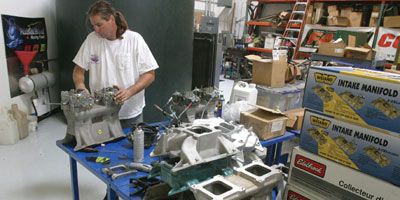
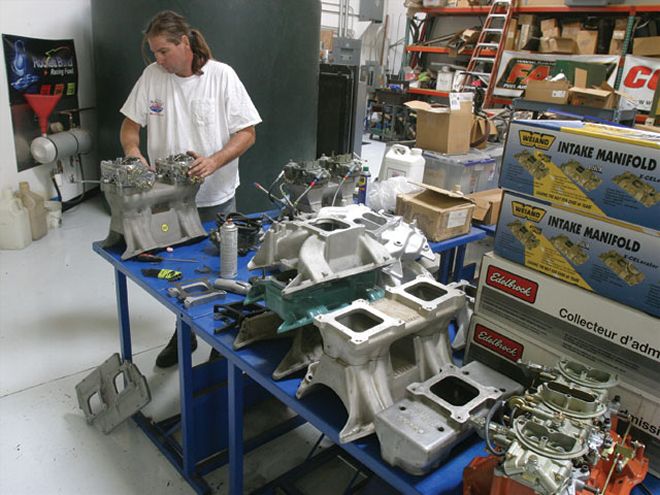 We spent another two days at Westech to rerun all these manifolds, this time on a hotter version of the 383 Mopar.
We spent another two days at Westech to rerun all these manifolds, this time on a hotter version of the 383 Mopar.
When we brought the hammer down on a group of 14 Mopar low-deck intakes in the Dec. '07 issue of Hot Rod, some trends were clearly defined, while other aspects of the results left us hungry for more information. Using a warmed-over solid-lifter 383 Mopar big-block breathing through stock heads as our test engine, we could definitively identify the characteristic differences between manifold types-with predictable results. As might be expected, the dual-planes all showed a tilt to favor the low-end portion of the power curve, while the single-plane intakes showed a slight advantage at the top of the rpm range. What was lacking was separation between specific intakes, with the spread between them ending up pretty thin. With just 450 hp and 5,800 rpm, there was not enough airflow demand to challenge most of the players.
Once the weakest manifolds were discarded from the analysis, less than seven numbers separated the range in average power. By our reckoning that's pretty close when considering the variety of intakes tested, including the dual-planes, single-planes, a Six Pack, and even a single-quad tunnel-ram. A few numbers is not enough to make us recommend rushing to the toolbox to swap a manifold. The most consequential lesson here is that at moderate power levels, any of the decent aftermarket intakes will get the job done. However, we had to wonder whether that would remain the case at a higher output level.
We sought to raise the specs on our basic 383. Clearly, there was easy power to be had by shelving the factory head castings for a more aggressive setup. We had a set of Edelbrock Performer RPM cylinder heads that had been CNC-ported by Modern Cylinder Head. Breathed on by Jeff and the crew at Modern (see page 96), our Edelbrocks definitely moved air, with peak flow clearing the 320-cfm mark, compared to about 220 cfm offered by the stock iron heads. To access some of that high-lift airflow, a substantial cam increase was also in the cards, stepping up from the 239/247-at-0.050 Comp MM series solid used last month to a 263/267 combo from the same Comp family of lobes. This raised the peak lift to an aggressive 0.646/0.648-inch gross. With this cam and head combo, our Achilles heel was a modest compression ratio of just over 10.0:1. A combination like this would be much more willing at 13.0:1.
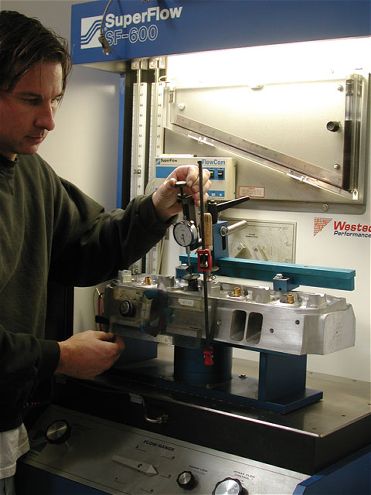
ON THE BENCH
Modern Cylinder Head CNC Edelbrock Performer RPM heads
SuperFlow 600 flow bench
28 inches water differential
Tested by Steve Dulcich
Looking at the flow results, there is little left to doubt about the execution of the port work by Modern Cylinder Head. The flow increases don't come with a tradeoff of giving up flow in one lift range and gaining elsewhere. Improvements to both the intake and exhaust flow are across the board, with big gains in low and midlift as well as in the peak numbers. That makes a nice fat curve with a healthy increase in flow area-just the formula for a substantial increase in power potential.
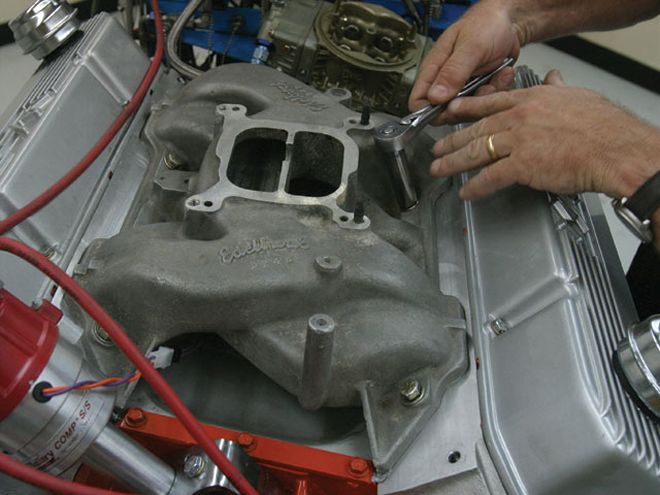
EDELBROCK DP4B
Though the DP4B gave nostalgia fans something to cheer about when it showed virtually as much output as any modern two-plane on our lower-powered engine last month, when the heat was on with more power, the outlook substantially changed. Compared to Edelbrock's modern RPM intake, the old-time DP4B was outgunned in every category. Kind of hurts to admit, but progress never sleeps.
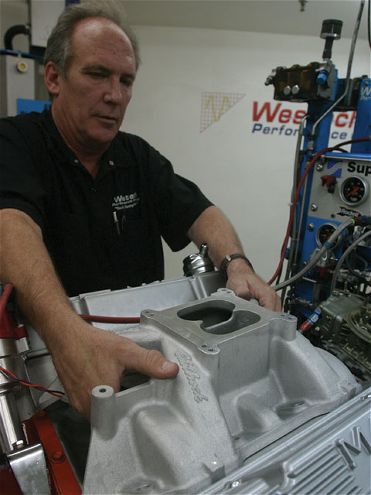
EDELBROCK PERFORMER RPM
What can we say? The RPM once again proves its worth, with strong average numbers and clearly superior output compared to the older standard two-plane designs. In fact, considering the averages, the RPM would be a better choice than many of the single-plane intakes, particularly if street performance and lower end are important. Edelbrock designed a winner with this intake; on the whole, it's the best single four-barrel intake on the engine.
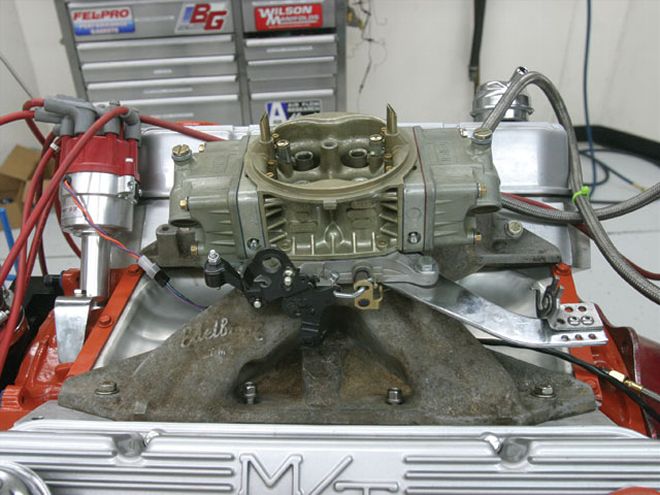
EDELBROCK TORKER 383
The old Torker was standard fare for street rats for too many years to remember and is still a common sight at swap meets today. The smaller-runner single-plane breeds good velocity, making it the best-performing single-plane in the low to midrange, holding on to good power up top. However, a modern two-plane like the RPM does everything better than this old street standard, especially when power is up.
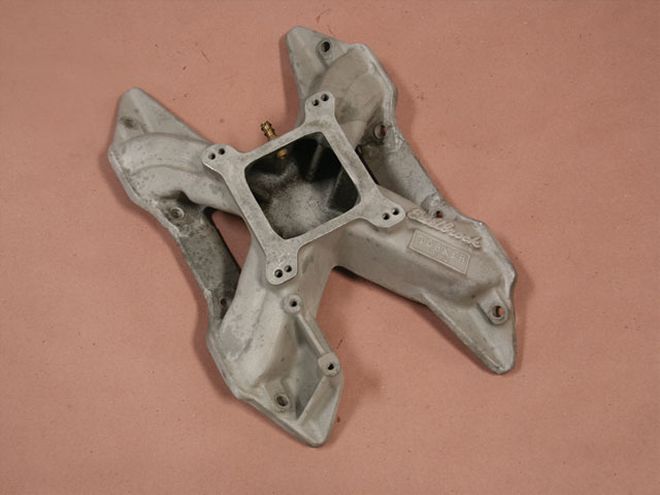
EDELBROCK TM6
Edelbrock's old TM6 was the standard for race single-plane manifolds from the '60s, and many an old-timer believes it has never been bettered. While quite a capable performer, there are better units out there today, though this intake still looks "right." If you have one and are not looking for the last ounce of power, it does the job.
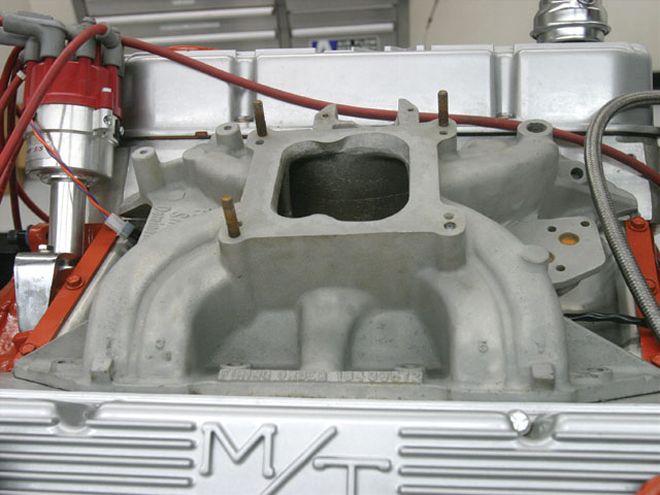
HOLLEY STREET DOMINATOR
Another blast from the past, Holley's Street Dominator was definitely ahead of its time, with a broad power curve and ample capacity to run up top. The sweeping, curved runners lend efficient airflow, helping the manifold achieve better numbers than the moderately sized runners would suggest. Like the TM6, it may be old, but it is still pretty darn good.
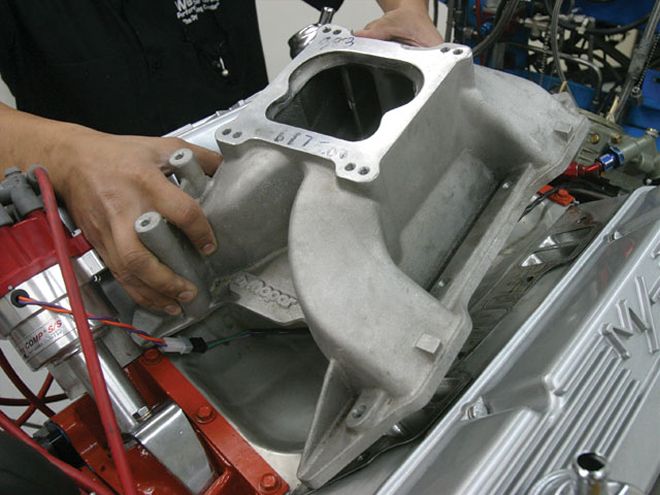
MOPAR PERFORMANCE M1 SINGLE-PLANE
The M1 single-plane runs with the pack as far as this type of manifold goes, and again it doesn't give much up to other designs. The runners lend themselves well to porting, and the carb pad will accept a ThermoQuad, which is a virtue in itself for many a Mopar man. The M1 actually squeaked out a little more top end than some of the older single-plane manifolds, but not enough to scrap what you've got.
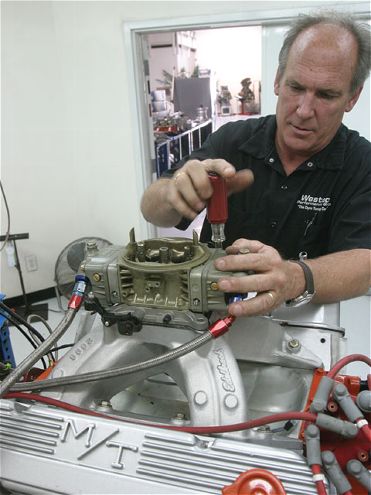
EDELBROCK VICTOR 383
Edelbrock's Victor 383 is by far the swoopiest high-rise single-plane design and also the newest. Not surprisingly, it pulled the other single-plane intakes up top by a convincing margin, though right at the bottom it did give up a little. The edge showed more substantial with our engine built up from the 450hp range as tested previously to the 500-plus range in its current configuration. That makes you wonder how much more it might be worth on a big-inch mill packing 650-700 hp.
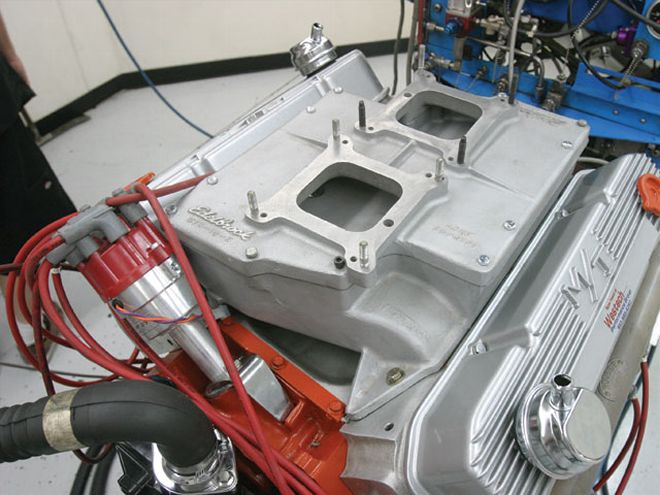
EDELBROCK STR-15-8
Our STR was the wild card. We had no idea how it would perform but hoped for a knockout punch, which didn't materialize. The inline configuration limited us to AFB-style carbs. The output was lackluster everywhere, especially down low. Some guys claim they can work magic with these intakes using popsicle sticks and epoxy.
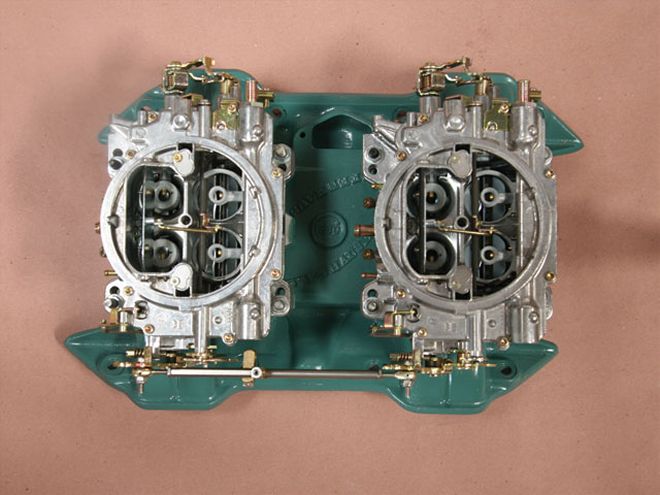
OFFENHAUSER DUAL-QUAD
Our first multicarb induction was the Offy dual-quad, and though its outright power isn't up with the better manifolds, it does gain some credit for eye appeal in a low-rise package. If max output is your game, there are many better choices, though with a relatively stock engine it probably wouldn't sting as sharply. We tested this one with a pair of Edelbrock Performer Series 500-cfm carbs.
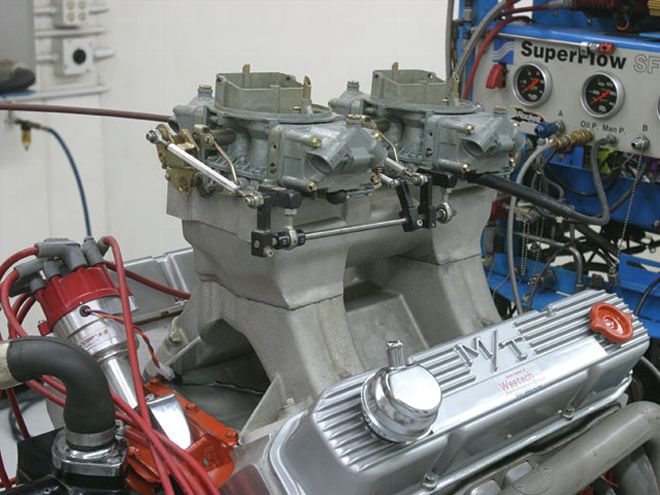
MOPAR PERFORMANCE M1 TUNNEL-RAM
Mopar's M1 tunnel-ram is a no-nonsense race piece, and it proved it with better top end than any four-barrel and nearly as much low end as the single-planes. The short runners likely target a much higher rpm range than our application, and we have used similar cast intakes to good effect with really high rpm. We ran this one with a pair of 750-cfm Holleys.
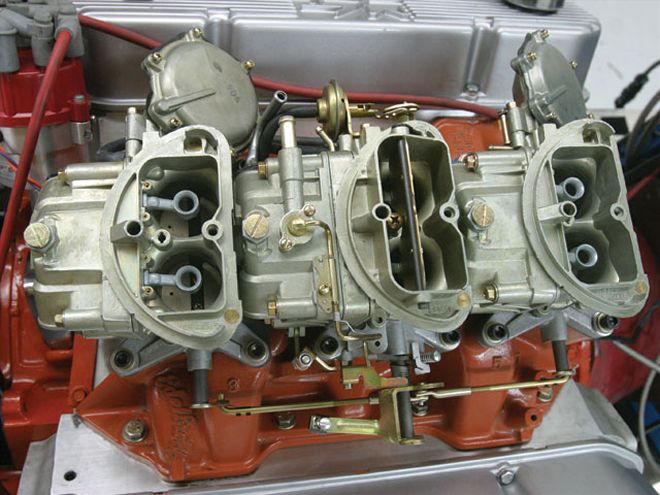
MOPAR PERFORMANCE SIX PACK
Mopar fans everywhere love the Six Pack for visual appeal, tradition, and its special sound effects when wide open. Chrysler did a great job with this design, considering its very respectable output and the fact it has been around since 1969. We ran Holley's new reproduction carbs, and the nontunable metering plates in the secondaries limited tuning; however, jetable plates from the likes of Quick Fuel Technologies can help to dial it in for even more power. The Six Pack always turns in a respectable showing.
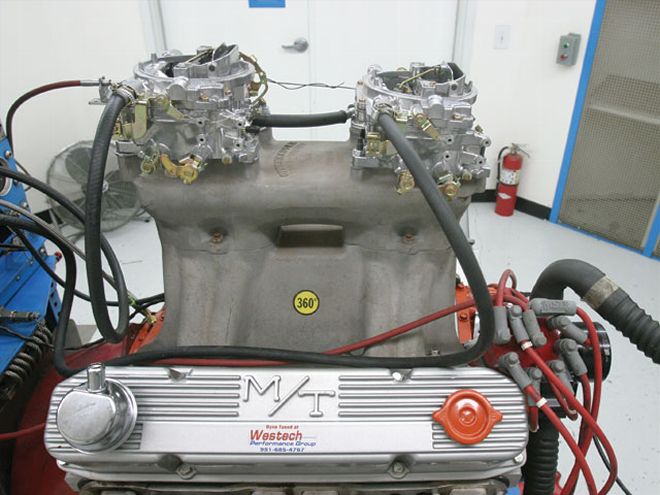
OFFENHAUSER 360 TUNNEL-RAM
Offy's 360 tunnel-ram uses a divided plenum and was stacked in our test with Edelbrock 500-cfm carbs due to the inline configuration. This intake took the prize for the tallest tunnel-ram, but that didn't add up to killer torque, and it fell a little short on top-end power compared to the others tested.
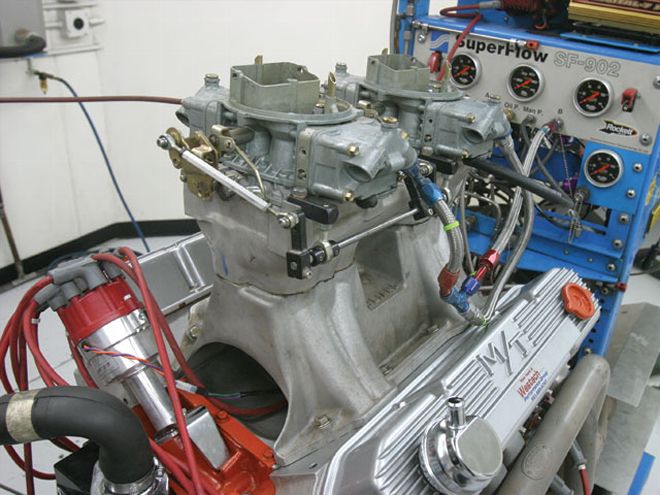
WEIAND HI-RAM TUNNEL-RAM
We've used the Weiand Hi-Ram to good effect before, so we knew this intake made power, but until now we've never run it back-to-back against similar intakes. We tested it with 750-cfm Holleys, and the numbers speak for themselves, with monstrous torque that takes all the other manifolds to school, including the two-planes. Up top, the Hi-Ram outpowered all contenders too. With giant gobs of additional torque and screaming top-end numbers, it's hard to argue against the worthiness of this design. HRM